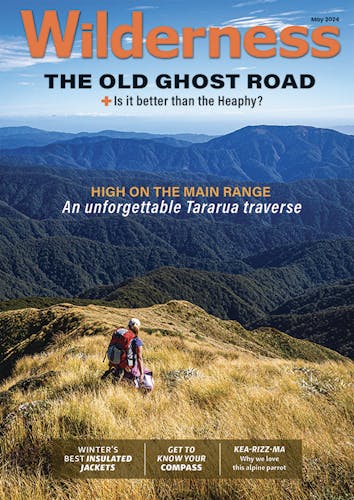Location awareness is a key navigational tool. All you need is your head.
It’s easy to walk and enjoy the views, the company, or just daydream and not notice what is going on around you. When this happens you might miss clues to gauge how far you’ve walked, how far is left to go, or that you may have taken a wrong turn.
Before the trip
Before leaving home, look at the route on a map. Look for easily recognisable features that will help identify where you are. The best are those that are unlikely to change, such as when you enter or leave the bush, pass under high tension cables, the start of a climb or descent, or a high point.
Other features, such as bridges, track junctions or stream crossings, are useful but need caution as there may be unmarked ones, or some may have been removed and streams dried up.
Note if and when you will be beside a river or lake. Note the basic direction of the tracks, even just the cardinal directions. If your map-reading skills allow, note where you will go up or down spurs, along ridges, across sidles or along a flat.
Check the DOC website or other sites that might provide track times or list hazards. Recent trip reports from tramping clubs and individuals often give extra information such as ‘lots of mud’ or ‘tricky bits’. There may also be information on birds, plants or fungi that you might see.
Build a picture of the trip in your head. It might go something like this: ‘We go westerly, crossing flattish farmland for half an hour before entering the bush (listen for tūī here). The track follows the river for about an hour, crossing back and forth (possibly six crossings). Then there’s a steepish steady climb up a spur for about an hour. Climb a stile here. Follow a ridgeline, undulating with a slow descent for the next two hours. Cross a stream. The track turns north, and after 30min the track emerges onto the road.’
During the trip
Look for streams, track junctions, overhead wires, whether the track is going up, down or flat. Observe how the land lies on your left and right. Listen for rivers or streams, waterfalls or turbulent water, human activity (if there’s a waterhole, picnic area or campsite nearby), farm or traffic sounds. Remember that sound can be muffled by bush. Feel your muscles when climbing and descending; this gives a guide to steepness. Note what’s under your feet: mud, sand, leaf litter, tree roots or stones.
Use all information to try to match those features with the picture in your head. Use the map (you took it, didn’t you?) to match with all the other information and to check your progress. If you got to the bush at the start faster than anticipated, you may get to the next point more quickly too. If a section took longer than anticipated then you are clearly travelling more slowly. Consider whether a change in plan might be wise.
With good preparation and location awareness, you should be able to monitor your progress and confirm you are on the right track.
Heather Grady is an instructor with Outdoor Training New Zealand








